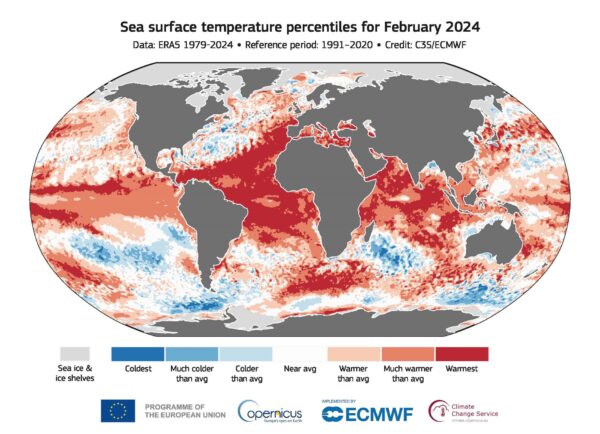New satellite data from the European Copernicus Climate Change Service shows the global average sea surface temperature in February was 21.06C, higher than the previous record of 20.98C set in August 2023.
Maps released by the organisation show huge areas of the world’s ocean were much warmer than the long-term average. The Atlantic was particularly warm, including the sea around the UK.
While the global average sea surface temperature record excludes the polar oceans, things are bad there too. Antarctic sea ice reached its annual minimum extent in February, registering its third lowest extent on record at 28% below average.
Fears of worst mass coral reef bleaching
Heat stress can cause corals to expel the colourful algae living in their tissues, Sky news said. Without the algae they turn bleached white and are vulnerable to disease and starvation, and eventually die-off.
Derek Manzello, the coordinator of NOAA’s Coral Reef Watch told the Reuters news agency:
“It’s looking like the entirety of the Southern Hemisphere is probably going to bleach this year.
“We are literally sitting on the cusp of the worst bleaching event in the history of the planet.”
Planetary records
For the planet as a whole, February 2024 was the warmest February on record globally, with an average surface air temperature of 13.54°C, 0.81°C above the 1991-2020 average for February and 0.12°C above the temperature of the previous warmest February, in 2016.
This is the ninth month in a row that was the warmest on record for the respective month of the year.
The month was 1.77°C warmer than an estimate of the February average for 1850-1900, the designated pre-industrial reference period.
The full data and information can be found on the Copernicus website here.
